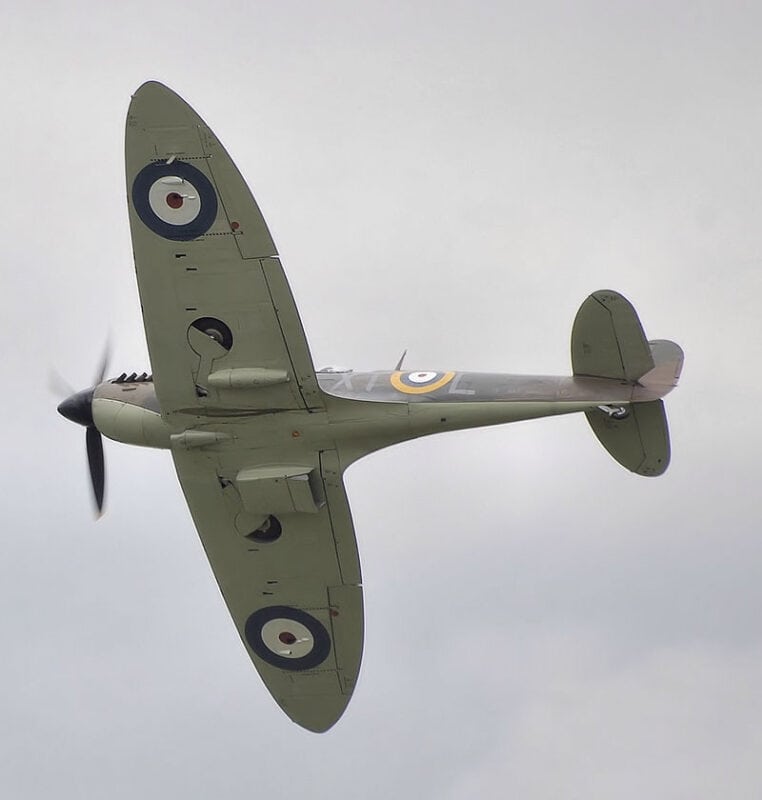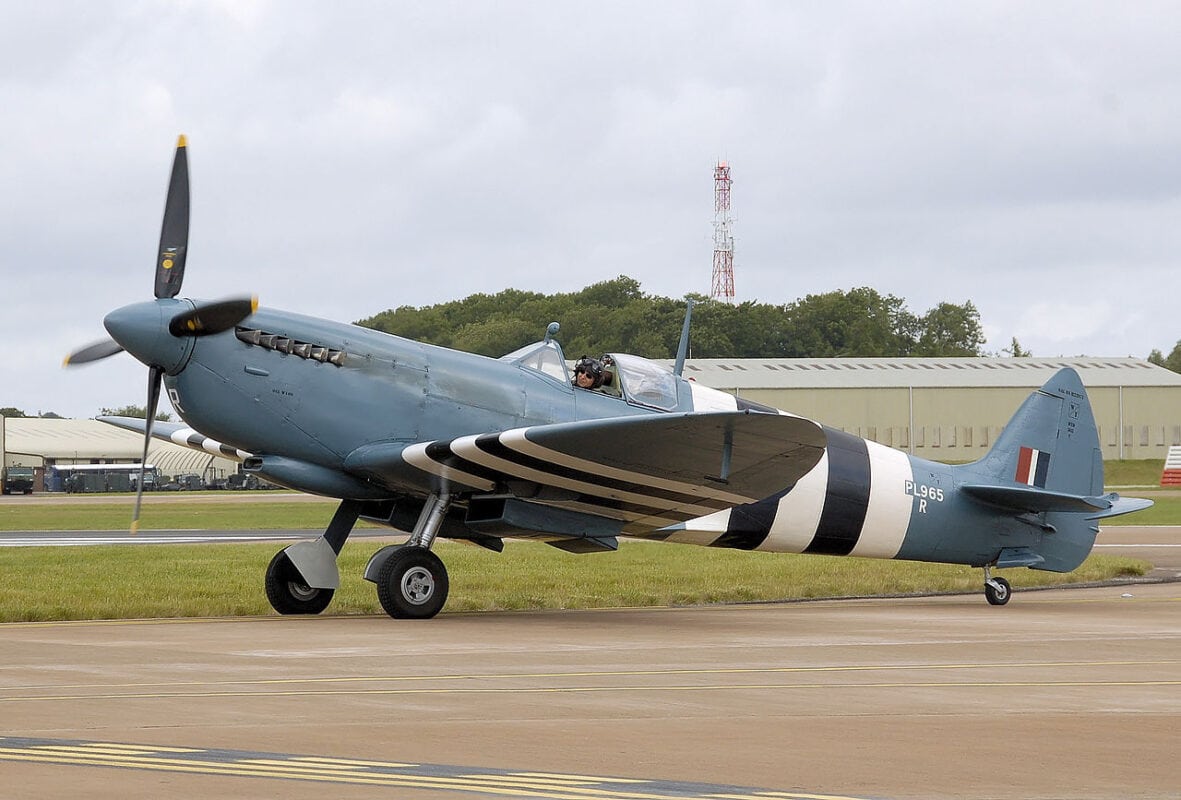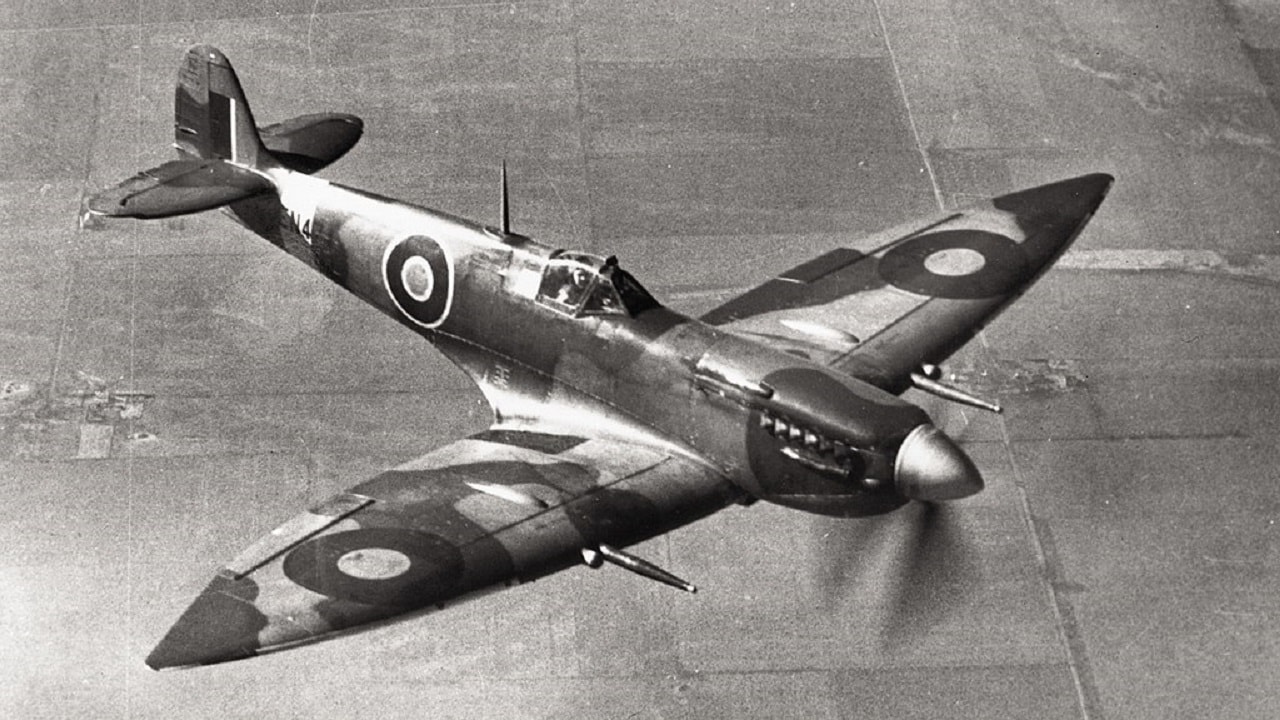Spitfire. Say the name and it conjures up images of some of the toughest tog fights in all of World War II. Here are all of the acts about this plane you never knew: Apart perhaps from the B-17 “Flying Fortress,” no other World War II aircraft is as famous as the Supermarine Spitfire. The British-made single-seat fighter aircraft was used by the Royal Air Force and other Allied countries before, during, and after the Second World War. It was also the only British fighter to be continuously produced throughout the conflict.
However, there are some facts that even aviation buffs may not know.
It Wasn’t a Long-Range Fighter
While numerous variants of the Spitfire were built, with several wing configurations, it was designed by R.J. Mitchell – chief designer at Supermarine Aviation Works in Southampton – in the mid-1930s to be a short-range interceptor.
A Carrier Variant Was Produced
The Seafire was the carrier-based adaption of the Spitfire that entered service in 1942. However, the idea of adopting a carrier-capable variant had actually been deemed moot by the Admiralty prior to the war. One factor was the overriding priority being placed on the production of land-based Spitfires instead.
The concept was pushed ahead following the Battle of Britain, and culminated in the initial batch of some 140 Seafire Mk IB aircraft. The name was derived from the abbreviation of the longer name “Sea Spitfire.”
Talking Names
The aircraft’s name today may seem iconic, but it was almost named the “Shrew” instead. The Air Ministry had submitted a list of possible names to Vicker-Armstrong for the new aircraft, which had been developed as the Type 300. “Shrew” and “Scarab” were among the choices that Mitchell had preferred, but Sir Robert McLean, director of Vickers-Armstrongs at the time, had another idea.
While the word “spitfire,” which dates from Elizabethan times was meant to refer to “a person with a fierce temper,” it was actually the pet name McLean’s eldest daughter Annie Penrose, who he called “a little spitfire.” The name had been unofficially used for Mitchell’s earlier F7/30 Type 224 design – yet despite that fact, the designer was quoted as saying “Spitfire,” was the “just the sort of bloody silly name they would choose.”
Use in the Battle of Britain
Today the Spitfire is associated with the Battle of Britain, but in fact, the Hawker Hurricane actually shot down more enemy planes over the course of the campaign.
One reason that people may assume the Spitfire was so prolific in the early stages of World War II may be due to the 1968 film Battle of Britain. Far more Spitfires were available for filming, and few scenes showed the Hawker Hurricanes. As a result, many now believe that the Spitfire was the dominant fighter used at the time.
However, while the Spitfire wasn’t used in as significant numbers, it did earn the respect of the Germans. One of the scenes in the movie depicted an actual exchange that Luftwaffe ace fighter pilot Adolf Galland had with Herman Goering, the head of the Luftwaffe. Goering, upset that the battle wasn’t going in Germany’s favor, asked his squadron leaders what they needed to win. Galland famously responded, “I should like an outfit of Spitfires.”
U.S. and Soviet Pilots Flew Them
The aircraft was operated by pilots of many nations during the Second World War, with many Polish, French, Norwegian, Czech and other “free” aviators at the controls. Less remembered is that more than 600 Spitfires were flown by the United States Army Air Force during World War II, but Yanks had been flying the aircraft even before America entered the war.
The 334th, 335th and 336th fighter squadrons, which were part of the VIII Fighter Command’s 4th Group, were all formed in 1942 out of the remnants of the American all-volunteer RAF formations, the so-called Eagle Squadrons – and they mostly flew the Spitfire throughout the war.
The British also provided the Soviet Union with some 1,200 Spitfires – in addition to 3,000 Hawker Hurricanes. The aircraft, which had been delivered to the Soviet Union via the North Sea, the Far East and the Persian Gulf, came as the result of a personal request from Joseph Stalin to Winston Churchill. Soviet pilots had to adapt to the wing-mounted guns, but a bigger issue was that ground-based anti-aircraft gunners had trouble distinguishing the streamlined silhouette of the British fighter from German BF-109s, particularly the squared wing-tip configuration of the later Mk. LF IX Spitfire.
Efforts were made to more clearly mark the Spitfires with larger and even brighter insignia – notably red stars – yet that had little effect. As a result, the planes were withdrawn to the relative quiet of southern Russia.
It Brought the Beer
Following the D-Day landings, a few resourceful Spitfire MK IX pilots modified their bomb-carrying wings in order that they could carry beer kegs. Those “beer bombs” ensured a welcome supply of altitude chilled beer to the Allied troops on the ground in Normandy.
Innovative Designs
The Spitfire was one of the first aircraft to have retractable landing gear, a feature that proved to be a problem with some pilots, who forgot to put down that landing gear when they came in for a landing.

Spitfire. Image Creative Commons.
Brad Pitt Owns One
The Spitfire had its maiden flight on March 5, 1936 and it entered service with the RAF two years later – only to be finally retired in 1955. It was the only Allied aircraft to be built throughout the entirety of the Second World War, and a total of 20,351 were built.

Spitfire. Image Creative Commons.
Today, there are less than 250 still in existence (the actual number varies based on the source), but fewer than 50 are still airworthy, including 30 in the UK. Actor Brad Pitt is among the private collectors to own one, for which he reportedly paid $4 million to buy after making the film Fury.
Now a Senior Editor for 1945, Peter Suciu is a Michigan-based writer who has contributed to more than four dozen magazines, newspapers and websites. He regularly writes about military hardware, and is the author of several books on military headgear including A Gallery of Military Headdress, which is available on Amazon.com. Peter is also a Contributing Writer for Forbes.

